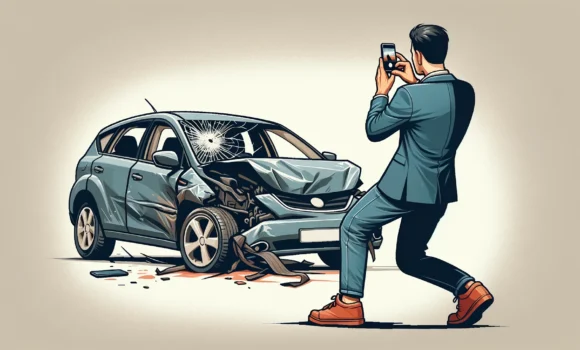Truck Crashes: Why the Fatality Rate is so High

Why Truck Accidents Happen
The enormous size of semi-trucks and tractor-trailers can be the catalyst for devastating and fatal injuries when involved in a crash. According to data from the National Highway Traffic Safety Administration (NHTSA), in 2018, 75% of trucks involved in fatal traffic crashes were large, heavy trucks with a gross vehicle weight rating (GVWR) greater than 26,000 pounds. Learn more about why most large truck accidents end in fatalities compared to other types of crashes.
Higher Risk of a Rollover Crash
A rollover accident happens when a vehicle tips over onto its side or roof — and these types of crashes are often deadly. While any vehicle can roll over — taller, heavier, and bulkier trucks are more susceptible to a rollover crash. When a truck is rounding a curved path, the centrifugal force can lean away from the curve direction, ending in a rollover. Tractor-trailers are even more prone to rollover crashes. A trailer has a high center of gravity and, when carrying unstable loads, it can increase the risk of a rollover accident when making turns on curvy roads.
Head-On Collision Crashes
When it comes to a head-on collision, with even just a small or medium-sized car, the survival rate is low. When you think of a large truck, such as a tractor-trailer, coming straight at you, the weight and force upon impact can cause extremely severe and fatal injuries.
Truck Accident Fatality Rate Statistics
The latest data from the NHTSA reports the following on truck accidents and fatality rates:
- In 2018, 4,951 people were killed in large truck crashes, up 1% from 2017.
- 71% of occupants in other vehicles were killed in truck accidents in 2018.
- 77% of fatal large truck crashes occurred on weekdays (6 a.m. Monday to 5:59 p.m. Friday) in 2018.
- In 2018, 3% of large truck drivers involved in fatal crashes had blood alcohol concentrations (BACs) of .08 or higher — truck drivers had the lowest percentage compared to other vehicle drivers (25% motorcyclists, 21% passenger car drivers, 19% light truck drivers).
- Drivers of large trucks involved in fatal crashes were less likely to have previous license suspensions or revocations than were passenger car drivers.
- In 2018, large truck drivers involved in fatal crashes had a higher percentage of previously recorded crashes (21.2%) than other vehicle drivers (19.8% motorcyclists, 19.0% passenger cars, and 17.5% light trucks).
Catastrophic Injuries and Truck Accidents
Walking away “without a scratch” after a severe truck accident is a highly unlikely — and for those who are lucky enough to survive, they could sustain life-altering, catastrophic injuries such as the following:
Traumatic Brain Injuries (TBI)
The following are the most common types of traumatic brain injuries that can happen after a collision with large trucks:
- Concussions are the result of a direct blow to the head or violent shaking. A concussion can cause loss of consciousness — and in severe cases, a concussion can disrupt the flow of oxygen to the brain and cause other complications leading to permanent damage.
- Contusions are bruises that occur when there is a direct impact to the head. Bleeding beneath body tissues causes bruising, and when blood builds up in the brain, it may need to be removed surgically.
- Coup-contrecoup injuries happen when one side of the brain hits the skull with a significant impact, and the force causes the brain to bounce back and hit the opposite side of the skull. Multiple contusions can be the result of this type of injury.
- Diffuse axonal injuries (DAI) occur when the brain rapidly shifts inside the skull. As the shift happens, the long connecting fibers in the brain, known as axons, are sheared as the brain accelerates and decelerates rapidly inside the hard bone of the skull. Diffuse axonal injuries can cause trauma to many parts of the brain. It’s not uncommon for those who suffer a DAI to be left in a coma. While the brain changes are often tiny, it can be challenging to detect using CT or MRI scans.
Spinal Cord Injuries
A spinal cord injury can be one of the most severe injuries after a truck accident, and the consequence can be devastating. Damage to the spinal cord can result in paralysis, either temporary, partial, permanent, or complete. The following are the different types of spinal cord damage:
- Monoplegia – Paralysis in only one area of the body.
- Hemiplegia – Paralysis in only one half of the body.
- Paraplegia – Paralysis from the chest or waist down.
- Quadriplegia – Also known as tetraplegia, this type of paralysis affects the cervical spinal cord or the first thoracic vertebra. Many people with quadriplegia have paralysis below the neck, completely unable to move.
Other catastrophic injuries from a truck accident may include broken bones, scarring, amputation, burns, and disfigurement.
Learn Your Rights After a Truck Accident
Victims of a truck accident can sustain life-threatening injuries — and the consequence can cause a lifetime of physical and mental complications. Dealing with the aftermath is difficult enough, and not knowing where to turn for help can make it that much more taxing.
When it comes to learning your rights and receiving compensation for your injuries, our attorneys have the experience you need to protect your best interests. We go above and beyond and advocate for individuals who have suffered significant harm due to negligence. We’ll fight to ensure you receive the most successful outcome possible.
Contact Strong Law, P.C. today at (417) 887-4300. Let us be your guide through complex
Tell Us About Your Case
Contact us today at (417) 887-4300 or online to arrange your free case evaluation. Our Experienced Trial Attorneys will walk you through your legal options.


